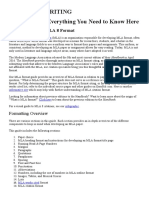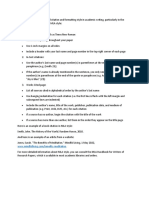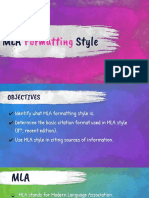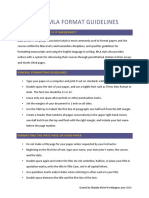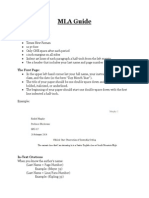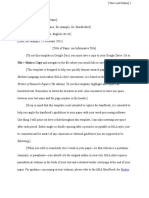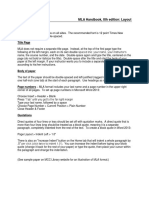0% found this document useful (0 votes)
12 views2 pagesMla Format
MLA format, established by the Modern Language Association, is a citation style commonly used in the humanities to maintain consistency and credibility in academic writing. Key components include a header, body text, in-text citations, and a Works Cited page, with specific formatting rules such as using 1-inch margins and double-spacing. In-text citations follow an author-page format, and examples of citations for books and articles are provided.
Uploaded by
alishbamanzoor034Copyright
© © All Rights Reserved
We take content rights seriously. If you suspect this is your content, claim it here.
Available Formats
Download as DOCX, PDF, TXT or read online on Scribd
0% found this document useful (0 votes)
12 views2 pagesMla Format
MLA format, established by the Modern Language Association, is a citation style commonly used in the humanities to maintain consistency and credibility in academic writing. Key components include a header, body text, in-text citations, and a Works Cited page, with specific formatting rules such as using 1-inch margins and double-spacing. In-text citations follow an author-page format, and examples of citations for books and articles are provided.
Uploaded by
alishbamanzoor034Copyright
© © All Rights Reserved
We take content rights seriously. If you suspect this is your content, claim it here.
Available Formats
Download as DOCX, PDF, TXT or read online on Scribd
/ 2





